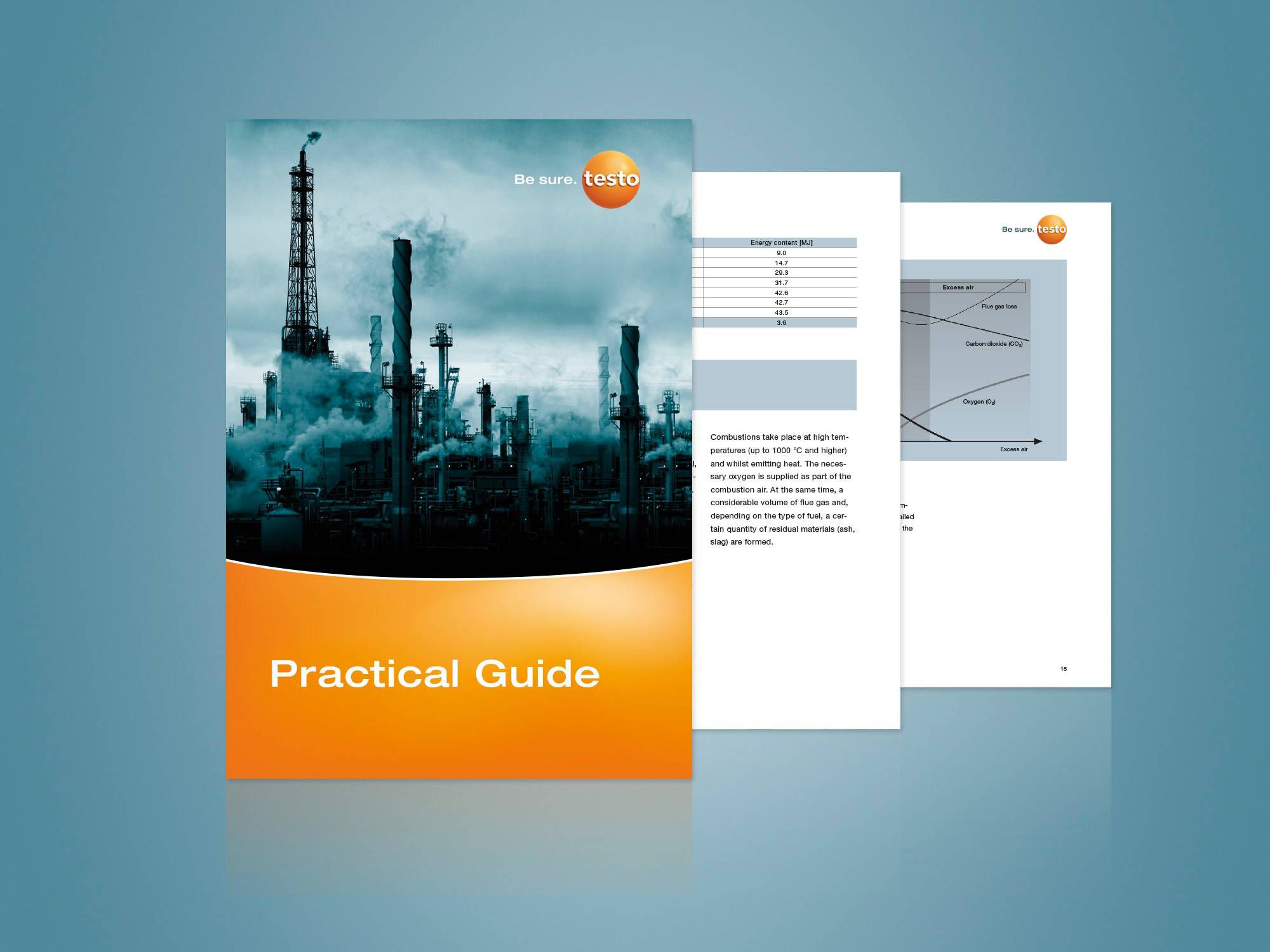Excerpt: Practical Guide Industrial Flue Gas Analysis. Emissions and process measurement guide.
The air ratio can be determined from the concentrations of the flue gas components CO, CO₂ and O₂, the correlations are shown in the so-called combustion chart (see image right). When there is ideal mixing of fuel and air, any CO₂ content is related to a specific CO content (in the range λ<1) or to a specific O₂ content (in the range λ>1). The CO2 value on its own is not clear due to the curve profile running beyond a maximum, which means that an additional test is required to establish whether the gas also contains CO or O₂ in addition to the CO2. For operation with excess air (i.e. normal scenario), a definitive measurement of O₂ is now generally preferred. The curve progressions are fuel-specific, i.e. each fuel has its own diagram and a specific value for CO₂ max. The connections between these numerous diagrams is often summarized in an easy-to-handle nomogramm (“fire triangle”, not illustrated here.) This can be applied to any type of fuel.
Energy balance of a combustion plant
In stationary operating mode, the sum of all the energies supplied to the plant must be equal to the sum of the energies delivered by the plant; see this table :
| Supplied energies | Discharged energies |
| Net calorific value and tangible fuel energy | Tangible heat and chemically bound energy of flue gases (flue gas loss) |
| Tangible heat of combustion air | Tangible heat and net calorific value of fuel residues in ash and slag |
| Thermal equivalent of the mechanical energy converted in the plant | Surface losses as a result of heat conduction |
| Heat brought in through the product | Heat dissipated with the product Convection losses as a result of furnace leaks |
FT: Flue gas temperature
AT: Combustion air temperature
A2, B: Fuel-specific factors (see table)
21: Oxygen content in the air
O₂: Measured O₂ concentration
KK: Variable which shows the variable
qA as a minus value if the dewpoint is undershot. Required for measurement on condensing systems.
For solid fuels, factors A2 and B equal zero. In that case, using the factor f, the formula is simplified to create the so-called Siegert formula:
FT: Flue gas temperature
AT: Combustion air temperature
CO₂: Measured CO₂ concentration
Order here
Practical guide contents
1. The combustion process
1.1 Energy and combustion
1.2 Combustion plants
1.3 Fuels
1.4 Combustion air, air ratio
1.5 Flue gas (exhaust gas) and its composition
1.6 Gross calorific value, net calorific value, efficiency
1.7 Dewpoint, condensate
2. Gas analysis for industrial flue gases
2.1 Combustion optimization
2.2 Process control
2.3 Emission control
3. Gas analysis technology
3.1 Terminology used in gas analysis technology
3.2 Gas analyzers
4. Industrial gas analysis applications
4.1 Power generation
4.2 Waste disposal
4.3 Non-metallic minerals industry
4.4 Metal/ore industry
4.5 Chemical industry
4.6 Others
5. Testo gas analysis technology
5.1 About the company
5.2 Typical instrument features
5.3 Overview of gas analyzers
5.4 Overview of accessories

How to contact us.
Do you have any questions?
We would be more than happy to help you.



